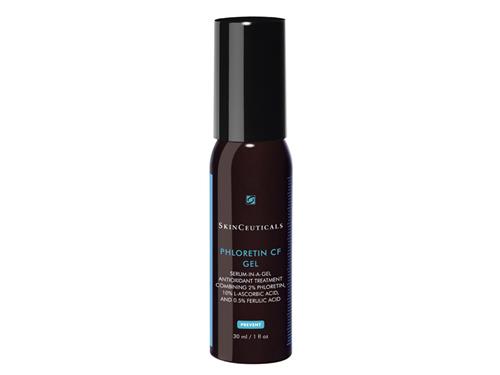Guide To Botox Injections
What are Botox injections used for?
Botox injections are most commonly used for:
- Frown Lines (FDA approved other sites “off-label”)
- Lines around the eyes (crow’s feet)
- Horizontal forehead lines
- Nasal scrunch or squint lines
- Lines on neck
Botox is also used in small amounts in a number of other areas on the face depending on the way your muscles of facial expression work. It can raise the outer part of the eyebrow if it is sagging, lift the corners of the mouth, and help to smooth out dimpled or cobblestoned chins. Generally it is not used in the lines around the mouth, usually because it might be difficult to speak and eat. Experts only please, for Botox injections other than in the frown lines (i.e., off-label).
What is Botox?
Botox Cosmetic is an injected liquid used to treat frown lines, squint and smile lines, nasal crunch lines, and horizontal forehead wrinkles. By relaxing the underlying muscles, these lines become less deep.
Botox has been used to treat thousands of patients medically and cosmetically over 20 years. Botox is produced in a lab by a bacterium called “Clostridium botulinum”. It has been purified under very strict controlled conditions. Botox is made by Allergan, a company with a twenty-year history of making this product safely.
When injected into a small facial muscle, it doesn’t travel anywhere else in the body. It gradually wears off naturally over a 3-6 month period. There are other forms of Botox now being produced by other companies. None have the track record of effectiveness and safety yet that Botox does. Note: I use Botox injections in my medical office, but I have no financial interest of any kind in Allergan.
How long do the effects of Botox last?
Most patients find that the effects of Botox injections last approximately 3-6 month . Most of my patients come 3-4 times the first year and then 2-3 times a year after that. After the muscles have been relaxed for a while, it takes less to maintain that relaxation. But every patient is an individual, and there is no knowing exactly how you will respond.
How long does Botox take to work?
The effects are may be first noticed in 72 hours but it may take up to 7 days to maximize the effect. You may be asked to return after the first treatment so that your provider can assess your response. The first set of Botox injections may only give a partial response. This is common and complete relaxation may be noticed after the second or third treatment.
How much does Botox cost?
Botox costs more in bigger cities with higher costs of living, like New York or Los Angeles. And some offices charge more than others. This variability makes the ranges in prices so wide as to be almost meaningless. Relaxing frown lines in a woman would cost between $250-600. Men, who have larger muscles, will need more – possibly $350-700. Treating more areas increases the price.
See Dr. Irwin’s average costs of cosmetic procedures guide for more information.
Do Botox injections hurt?
Botox is injected with a very small needle (like an acupuncture needle), so it causes very little pain upon injection. Botox does not cause irritation or inflammation. Occasionally, patients have complained that there is a mild stinging sensation.
Are there any people who should not receive Botox?
Botox injections should not be given to pregnant women, nursing mothers, or patients with neuromuscular diseases like myasthenia gravis, Lambert-Eaton syndrome, ALS (Lou Gehrig’s), or motor neuropathy should not use Botox. Patients who are allergic to human albumin (different than an egg allergy) should not use Botox. It is not recommended in pregnancy or nursing because it has not been tested.
Are there any medical side effects?
Side effects include bruising, eyebrow or eyelid droops, and a temporary headache, and rare flu-like symptoms have been reported. Many of the side effects that are listed for Botox are seen when large amounts are injected for medical purposes as opposed to the small amounts used for cosmetic purposes. Very rare allergic reactions have been reported.
Cosmetic side effects of Botox?
We’ve all seen these – and with celebrities too frequently. Basically, these problems are due to either a inexpert injector or a patient who insists on this look despite all evidence that it looks bad! With an expert, experienced doctor or nurse injecting, these potential problems should be rare or nonexistent.
· The frozen forehead. I call it the “Oscar-Night Freeze.” We’ve all seen this: the face absolutely doesn’t move. The result looks slightly robotic, not natural. In the beginning, when working with frown lines, the corrugator muscle (the muscle that operates when people frown) may need to be completely relaxed, for a while. Once the frown line dissipates, though, it makes sense to adjust the Botox dose to allow for a little movement so that the expression looks natural. Remember, the goal is no wrinkles, not no movement.
· One or both eyebrows pop up too much. With bad Botox, one or both eyebrows are elevated so much that the arch or the last third of the eyebrow sits up too high, giving the patient a chronically surprised look. In addition, odd wrinkles can occur over the lateral brow. Usually this can be prevented or fixed easily with a few strategically placed drops, if it happens.
· Eyelid drooping. This is the complication you read about most often, though it’s actually one of the rarest in my experience. Most of the time, the eyebrow has dropped which makes the eyelid feel heavy. If your eyelid is truly drooping after Botox injections, call your doctor. There are prescription drops that will temporarily help elevate the eyelid, making this problem bearable until the effects of the Botox are gone.
· “My brow feels like an elephant sat on it.” This is the result of over-Botoxing the forehead, specifically the frontalis muscle, which goes all the way across the forehead and is used to raise the eyebrows. Too much Botox relaxes the forehead too much, which results in a heavy feeling. When the forehead comes down, so do the eyebrows. Since some of us raise our eyebrows to make the eyes feel more open when there is excess eyelid skin (called hooding), then dropping the eyebrows makes the eyelids look worse—or more hooded. If the doctor doesn’t correctly perceive how much the patient uses this muscle, then too much Botox will make the forehead feel heavy.
· Hospital stays and bootleg Botox. There have been several legal cases where doctors bought bootleg or illegal Botox. This is Botox that’s used primarily for research purposes with animals. This type of Botox comes very concentrated, and the doctors involved in these cases tried to dilute it themselves. In one case in Florida, a doctor diluted it incorrectly and landed himself, his girlfriend, and a patient—the doctor injected all three of them—in the hospital for months. In another case, a doctor was diluting Botox and then putting it into Allergan Botox vials. The best way to protect yourself is to make sure your doctor has a long and excellent reputation in your community. And don’t go for cheap “Botox specials”—it could be cheap for a reason! Never be injected outside a doctor’s office or a medical setting. Remember those “Botox parties” held in offices or homes? Not a good idea.
Does Botox interact with other drugs?
Very rarely. It is always important to let your provider know if you are taking other drugs.
How can I tell good Botox work from bad?
With Botox, there is the great, the good, the ugly. Great Botox is customized to your individual face, taking into account factors such as which facial muscles you use the most, your facial muscle balance from side to side (we all have asymmetries), your job, your social life, and the look you want (for example, natural or high glam (my word for frozen). Great Botox requires steady hands, the eye of an artist, and the passion to get it perfect. Great Botox injectors can be hard to find.
Good Botox is where you get the standard four or five shots into your frown lines and you go on your way. It works perfectly well, but there’s not much customization. And the range of looks that these injectors can accomplish is limited. But if you have only some frown lines, good Botox injections can work just fine for you.
Ugly Botox is all too common. You’ve seen it on television: it’s that completely unnatural frozen look, or worse, where the poor person almost looks like she’s had a stroke, one side of her face completely different than the other. The point is, Botox is not a cookie-cutter procedure. In the hands of a good injector, it can create a marvelously natural look that makes you more refreshed- and relaxed-looking. In my opinion, the goal of Botox is no wrinkles, not no movement!
Finding a good Botox doctor or nurse.
First, look at your friends and ask them for recommendations. If you like the way your friend looks, chances are you’ll like her doctor! Next, schedule a consultation if you can, and find out how many years the doctor or nurse has been doing Botox injections (at least five years is nice). Avoid offices that advertise; offices advertise because they aren’t busy enough. Good doctors are busy. And you can always check on the Allergan website, which has a list of Botox providers in your area.
Botox and Dysport Q&A Discussion
Is it possible to become resistant to Botox?
Let’s put it this way: It is extremely rare. If you had botulinum poisoning as a child, say, from some home-canned vegetables, you could have antibodies to it and be resistant. Also remember that Botox is used in much greater quantities for many different medical conditions with resistance only rarely, sometimes in doses that are a hundred times higher than the ones used for cosmetic purposes. We use very tiny amounts of Botox for cosmetic uses. If you suspect that you’re resistant, it’s more likely that the Botox is not being injected correctly or that it’s being overdiluted.
What about all these “better than Botox” cosmeceutical remedies I keep reading about, like StriVectin and Frown Ease?
For frown lines, none of the creams or patches that have claimed to be as good or better than Botox has ever worked for longer than a few hours or, at most, a few days. StriVectin published a “study” comparing itself to Botox in which one group of patients slathered the cream on their frown lines and the other group had Botox injections. The patients were immediately asked which group looked better—the StriVectin side or the Botox side. All of them testified the StriVectin side looked better. However, Botox takes 5 days to work after it’s injected! So a comparison immediately after the injection is absurd. In addition, StriVectin is also a moisturizer, so it can make your skin look smoother immediately after being applied. This is the kind of advertising snake-oil that wastes your time and money.
What about cutting the nerves in the forehead? Doesn’t this work as well or better than Botox?
This does work, but it’s awfully invasive, since it’s a surgery. You would never have any movement in the area again. and to my eye that looks unnatural. With Botox injections done correctly, some movement can be left in the forehead, resulting in a more natural look without undue wrinkling.
What’s the difference between Botox and Botox Cosmetic?
They are exactly the same – they are just marketed and priced differently by the company.
What’s the difference between Botox and Reloxin or Dysport?
Dysport (marketed in the U.S. as Reloxin) is another form of botulinum toxin that doctors have used in Europe for many years. The FDA recently approved its use in the United States. It is distributed by Medicis, a reputable company. Interestingly, it’s the first real competition for Allergan’s Botox. It remains to be seen if Reloxin will be a worthy opponent of Botox or not. Botox Cosmetic is so safe and effective; it has set the bar quite high.
Almost every year, I go to Paris for the International Master Course on Aging Skin (IMCAS), and Dysport has been talked about for a number of years there. After a review of the data and talking to European physicians, I’d surmise that the only difference seems to be that Dysport injections may not last quite as long as Botox and may be more painful. Time will tell.
See Dr.Irwin’s Guide to the differences between Botox and Dysport here.
My husband went in for Botox, and it cost him twice as much as it does me. Did he get ripped off?
No, probably not. Men generally need about twice as much Botox as women to get the same effect. This is because the muscles in their face are larger.
I am an African-American woman and wonder if it’s safe for me to get Botox injections?
Yes, absolutely safe. It is safe for all ethnicities and all skin types, so you can feel comfortable going in that direction if you’d like.
I’ve gone twice to the same office and had Botox injections, and it doesn’t seem to be working very well. What could be wrong?
It could be a couple of different things. It may be that your nurse or doctor is diluting the Botox beyond what Allergan recommends. I would find another reputable office and try a different doctor just to compare. It could also be that the Botox isn’t being injected in quite the right places for your muscles. The doctor or nurse injecting should look at the way your muscles are moving before they start injecting. It may also be that you’re not getting enough Botox for the size of your muscles. With very deep frown lines, it can take a year or more with Botox alone to get the area looking more relaxed. If that’s the case, you might want to ask your nurse or doctor to inject a little Restylane in the area at the same time, which will give you more immediate relief from the frown lines.
Next, learn about dermal fillers such as Restylane and Juvederm.
See Dr. Irwin’s expert answers to other reader’s questions on Botox and Dysport:
Would Botox work for upper lip lines?
Is it OK to use Botox around the lips instead of Juvederm?
What do I do about a Dysport mistake?
Are Juvederm and Botox safe for African American skin?
Is it possible to relax forehead lines and lift the brow with Botox?
Are Botox and Thermage Compatible?
Can Botoxing some muscles create other lines?
Why do some areas of the face seem to require more Botox?
See all of Dr. Irwin’s expert answers on Botox and Dysport.














